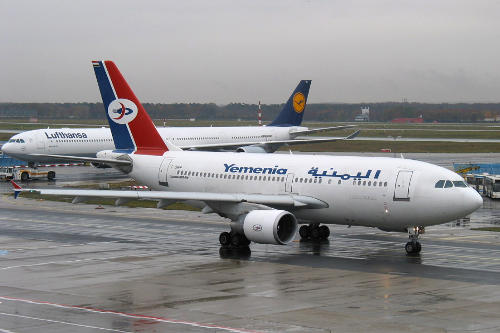Aviation insurance
 © Aleks B., CC BY-SA 3.0 © Aleks B., CC BY-SA 3.0 |
June, alone, is likely to be ranked as the most expensive year for insurers, following the month of September 2001
Two dramatic crashes have taken place at the end of the second quarter of 2009: that of Air France in the middle of the Atlantic Ocean which claimed the lives of 228 passengers and that of Yemenia Airways in the Indian Ocean killing 152 people. According to the first estimates, indemnification applications filed for the whole year could reach over 2.2 billion USD, that is, 57% more than the annual average of 1.4 billion, (calculated on the long-term basis).
The loss ratio of the aviation class of business should exceed 200% in 2009 while it was of 72% at the end of 2008.
A wide range of guarantees
Because of the high complexity of air transport, aviation insurance stands as a very particular class of business which is required to face a multitude of stake holders, countries and legislations. It provides a wide range of covers, three of which are big type of policies:
- aircraft hull insurance which covers material damage sustained by the aircraft
- third party liability insurance which covers the third party liability of the user and/or owner and/or the pilot
- products liability designed for manufacturers, aircraft manufacturers and motorists
Two major crashes
For the AF 447 Air France flight, the airline company, along with insurers are required to indemnify victims' relatives in compliance with the Montreal convention which defines the carrier's liability even in the absence of any wrongdoing on its part, as long as the accident takes place on board the aircraft.
Axa Corporate Solutions is involved in the indemnification of victims up to 12.5%.
A first advance of approximately 17 500 EUR (24 399 USD) has been disbursed to the beneficiaries three weeks after the crash, whereas the total amount of compensation has been set at 116 000 EUR (161 733 USD) minimum per victim. For the loss of the aircraft, Air France will perceive 67.4 million EUR (93.9 million USD) from its insurers. Air France is coinsured by several companies including AXA (12.5%), AIG (12.5%), Global Aerospace (7.5%) and Allianz.
As to the second crash of June, the company Yemenia Airways is part of the “Gulf Consortium” insurance plan. This program covers aeronautics risk and almost all of the air fleet of the Persian Gulf and most of the Middle East fleets. Ace Global Ltd., which on top of an insurers' pool including AXA Corporate Solutions with 3% shares, will be covering both aircraft damages and carrier's liabilities.
The first 10 000 EUR (14 931 USD) compensation per victim has already been granted to the beneficiaries in October. The remaining damages will amount to several tens of millions of dollars. The aircraft, which crashed on the coasts of the Comoros has been evaluated at 34 million USD.
Tariffs revised upwards
Having decreased by more than 10% per year with the remarkable decline of total loss experience in 2006 and 2007, aviation insurance tariffs are poised to be revised upwards following these two important crashes.
The insurers are planning a substantial increase of the annual contributions in an effort to meet indemnification expenses and to consolidate their reserves. A 20% to a 25% increase is expected in 2010.
The month of July 2009 has already reported a 20% increase of hull and third party liability premiums. A serious blow for air transport sector which is already affected by lower traffic and by rising fuel prices.